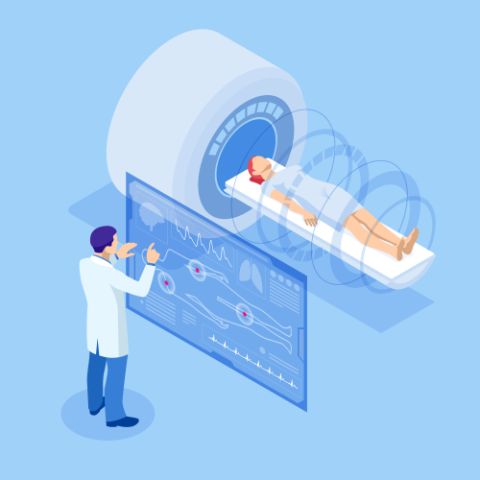Why is it Important to Take Critical Illness Insurance with Life Insurance?
Why is it Important to Take Critical Illness Insurance with Life Insurance?
Published on September 8, 2021. EST READ TIME: 3 minutes

When you are looking to secure the future of your loved ones, life insurance is probably the first thing that comes to your mind. The policy covers you and your loved ones against myriad uncertainties, such as loss of income, life-threatening illnesses, and untimely death of the policyholder. However, if the earning member of the family gets diagnosed with a critical illness, it can cause immense mental stress and financial burden on the family. This is when having a critical illness policy helps. So, if you have life insurance already and are looking to extend the protection, you must consider taking critical illness insurance.
What is critical illness insurance?
Critical illness insurance is a health insurance rider that covers policyholders against chronic diseases and life-threatening conditions. Suffering from a critical illness, such as cancer, heart disease, kidney failure or paralysis, is not only disheartening, but also financially strenuous for the entire family. One needs to go for regular check-ups and the treatment usually continues for a long time.
Critical illness policy is a part of health insurance. When a policyholder gets diagnosed with a critical illness, the insurer pays them a lumpsum against his critical illness cover. This amount comes in quite handy for meeting medical as well as other expenses.
What is life insurance?
Life insurance is a simple yet important plan that offers financial security to the policyholder and his loved ones. The insured must pay annual premiums and keep the plan active. After a set period or upon the premature death of the insured, the insurance company pays a lumpsum to the nominee or policyholder’s family.
Difference between critical illness and life insurance
Although both plans offer financial protection to policyholders and their dependents, their features and benefits vary. Here’s a look at the differences:
1. Coverage limit:
The minimum sum assured for life insurance usually ranges from INR 50,000 to 1 lakh. These insurance plans do not have a maximum limit, soyou can choose any amount as per your financial requirements.
For a critical illness policy, you can choose a sum insured of up to INR 50 lakhs depending on the expected treatment costs and other factors.
2. Risks covered:
Life insurance covers the risk of premature death of the policyholder. It offers financial protection to the dependents.
On the other hand, critical illness insurance covers the likelihood of suffering from a life-threatening condition. It helps the policyholder avail quality treatment without worrying about finances.
3. Policy variants:
Life insurance policy has different variants, such as term insurance, term insurance with return premium, endowment plan, unit linked insurance plan, whole life insurance, moneyback policy, group life insurance, child insurance plans and retirement plans.
A critical illness plan has no variants.
4. Benefits paid:
Life insurance plans offer maturity benefit to the policyholder or death benefit to their immediate family members. The benefit is usually paid in a lumpsum. Moreover, policyholders may also receive bonus and other benefits from the insurer.
When one takes a critical illness policy, they receive a lumpsum from the insurer only when diagnosed with a life-threatening condition covered under the policy. The plan pays no maturity benefit to policyholders.
5. Policy term and premium:
Life insurance plans can be taken for a period of 5 years to the end of life. Premium is higher for life insurance plans.
A critical illness plan is usually offered for a period of 1-3 years.The premium for the same is low when compared to life insurance.
Importance of critical illness insurance
-
Large coverage:
-
Lumpsum benefit:
-
Better treatment increases chances of survival:
-
Double tax benefit:
The plan covers many critical illnesses and keeps policyholders at peace.
If diagnosed with a critical illness, the insurer offers a lumpsum to the policyholder against his critical illness policy. This amount can be used for treatment and medication expenses,paying household bills, school fees and more. It acts as an income replacement when the breadwinner of the family is diagnosed with a life-threatening condition.
The lumpsum payout helps the policyholder avail timely and quality treatment. This helps increase their chances of survival.
As per Section 80D of the Income Tax Act 1961, policyholders below 60 years of age can save up to INR 25,000 a year on the premiums paid. Those above 60 years can receive tax deductions of up to INR 50,000 every year. Also, the critical illness policy payout is tax-free.
Conclusion
Taking a critical illness policy with life insurance is a smart way to cover yourself and your loved ones against sudden financial challenges. Both plans offer a lumpsum payout that helps a policyholder and his family members to sail through tough times.Hence, to secure your finances and the future of your loved ones, you must consider taking critical illness insurance along with a life insurance policy.
Disclaimer: The above information is for illustrative purpose only. For more details, please refer to policy wordings and prospectus before concluding the sales.
RELATED ARTICLES
Understand the Difference Between Critical Illness Insurance and Normal Health Insurance
Be an Early Bird to Pick the Right Critical Illness Insurance Plan
Dos and Don'ts While Buying Critical Illness Insurance










 Health Insurance
Health Insurance  Travel Insurance
Travel Insurance  Car Insurance
Car Insurance  Cyber Insurance
Cyber Insurance  Critical Illness Insurance
Critical Illness Insurance
 Pet Insurance
Pet Insurance
 Bike/Two Wheeler Insurance
Bike/Two Wheeler Insurance  Home Insurance
Home Insurance  Third Party Vehicle Ins.
Third Party Vehicle Ins.  Tractor Insurance
Tractor Insurance  Goods Carrying Vehicle Ins.
Goods Carrying Vehicle Ins.  Passenger Carrying Vehicle Ins.
Passenger Carrying Vehicle Ins.  Compulsory Personal Accident Insurance
Compulsory Personal Accident Insurance  Travel Insurance
Travel Insurance  Rural
Rural 











